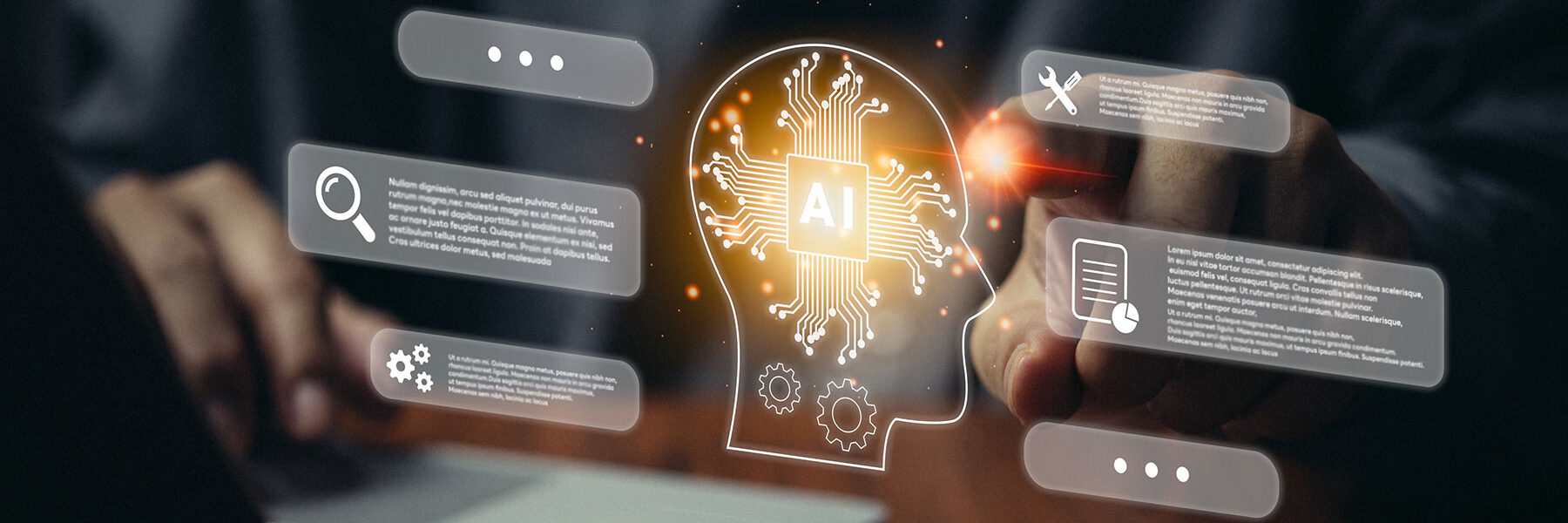Once again, we are witnessing a technological disruption in society, one that is adding new words to our vernacular, shifting perceptions about intellectual property, and raising some ethical questions.
We’re of course talking about the seemingly sudden arrival of generative AI tools like Chat GPT, the artificial intelligence chatbot developed by OpenAI released in November 2022.
This disruptive technology has upended many aspects of our lives and left many of us wondering how this will transform industries, professions, and careers. As a fundraising communication professional and an annual giving expert, this got us thinking about the implications for our own work and that of our clients in the fundraising space. We decided to share our thinking around the possible uses and pitfalls of generative AI and what we are keeping an eye on going forward.
Generative AI is Everywhere
Chatopenai.com, bard.google.com, Bing’s Sydney—all examples of generative AI. All are built using a large language model, or a huge repository of information. The companies behind each of these tools have used the whole of the internet to train how these tools respond to our prompts. For reference, just on YouTube alone, 271,330 hours of new content is posted each day.
The main difference among them seems to be how the companies are trying to integrate these tools into our daily lives. While ChatGPT seems content to be standalone and lease its server capacity as a white label resource for companies, Google and Bing have announced plans to deeply integrate their tools with their own technology ecosystems.
For years, Gmail has suggested a word or phrase to come next so you can complete a sentence in an email. Now, Bard can write the entire email for you. Wow!
And with Microsoft, imagine putting a large data set into an Excel document and the dashboard of key indicators and trends appears within seconds. Instead of needing to transform the data manually, you just type the changes you want to see like you’re talking to your data analyst. Bazinga!
While some people and businesses are really leaning into generative AI to get their work done, others seem more likely to think of this new technology as another tool at their disposal to improve their effectiveness. Wherever you stand, communications as we know it is changing and is unlikely to revert back to what it was.
Ways to Use the New Technology
We’ve been watching the chatter out there regarding how people are using generative AI. Here are some of the ways we’ve seen it being incorporated into communications and annual giving work:
- generating ideas for headlines or email subject lines
- testing blogs, radio spots, and welcome letters
- looking for the right word/phrase or better ways to say something
- conducting research about unfamiliar areas (One person noted that “it’s replaced Google for me.”)
- producing personalized acknowledgment letters
- generating scripts for phone calls
- drafting direct mail content
- creating social media posts
The list goes on, and on, and on.
You can find more practical applications in a recent blog post from our colleague Reed Tyler. Our systems and operations colleagues recently created a guide for organizations to determine how AI can support their strategies and where to get started. And BWF CEO Josh Birkholz and Senior Vice President of Decision Science Alex Oftelie presented a webinar in which they looked at AI vis-à-vis analytics and technology and covered its current applications including prospect ID, predicting how donors feel, and business efficiency applications like portfolio optimization powered by AI.
Proceed with Caution
Among fundraising communicators and annual giving professionals, many view these new tools as ways to improve productivity—and give their creativity a boost. But the tools aren’t a panacea, and use of them shouldn’t come without some guardrails.
The tools seem to work best when:
- you’re not counting on originality or creativity.
- you’re looking to validate or doublecheck your work.
- you’ve got writer’s block or need to jumpstart a task.
- you need to summarize a lot of information at once.
- you want ideas for rewrites from different perspectives.
- you’re interested in developing personas for message testing.
When working with AI, it’s becoming clear that the best approach is a bit of skepticism mixed with caution. Here are a few things to keep in mind:
- Intelligence is a relative term, and these tools can often be egregiously wrong. When it provides you with a recommendation, make sure you understand how it came to that conclusion and be able to articulate or justify that response. In some cases, you can ask the AI to tell you. It might be worthwhile to pretend AI is a four-year-old. They don’t have a full understanding of everything they see, hear, and experience. You need to guide them (read: AI) to solve the problem and work out the best solution.
- Keep privacy top of mind and don’t share proprietary information. Strip that out of your requests and don’t share details about your donors or pending projects or initiatives as you don’t know how the information will be used. Don’t lose sight of data ethics, intellectual property, and copyrighted material. After all, you’ll still be the author and therefore responsible for the content.
- Remember that question wording matters. The AI will get better the more you talk to it. Start general and ask follow-up questions that lead it in the direction of the question you are really trying to answer. Take small steps. Don’t jump to the end. Conversely, provide it with source material so it can train itself on material specifically relevant to you (and not the whole of the internet).
- AI can be a good springboard but will likely lack the appropriate emotion and nuance that makes communications successful. Your understanding of your organization and its brand identity (and thus, voice and tone) are paramount to nailing the communication. Don’t cede that responsibility.
- Check for accuracy and verify. Watch for responses that don’t make sense and are overly verbose or stilted. After all, you’re trying to build trust and relationships with your communications and don’t want to undermine your efforts.
- If this tool is becoming widely used in your organization, then it may be time to provide some guidelines, just as you’ve done with your editorial content, graphic identity, and social media posts. Some guideposts, tips, and best practices are always helpful and often necessary to ensure there’s no repercussions for the brand or your donor relationships.
Harnessing AI’s Power Going Forward
The opportunities for AI are nearly endless, and the tools are constantly evolving. Surely, this is only the beginning of seeing what this tool can do and how best to use it. We continue to believe that we need human communicators—at least for the time being.
AI is sure to transform our work as we know it. Here are a few things we’re keeping an eye out for in the months ahead:
- the next university to use ChatGPT to generate a press release or speech that falls flat and turns out to contain inaccurate information
- the use of AI in support roles for nonprofits (e.g., a website chatbot driven by AI or segmentation and ask array/designations for an appeal)
- how AI will impact reporting, metrics, and analytics
- the use of AI to conduct sentiment analysis on staff and/or constituents
- the use of AI in performance reviews
We recently heard someone say, “AI isn’t going to replace your job, but the person who understands how to use AI will.” We’re eager to see how fundraising communicators will harness AI’s power to enhance their work. Disruption and innovation are upon us once again. How will you use it to enhance your efforts and help your organization fulfill its mission?
At BWF, we stand ready to assist you with all your fundraising fundraising communication needs. Please reach out to Carole Arwidson, director of strategic communications or Geoff Hallett, director of annual giving and digital marketing. It’s a privilege to help.




